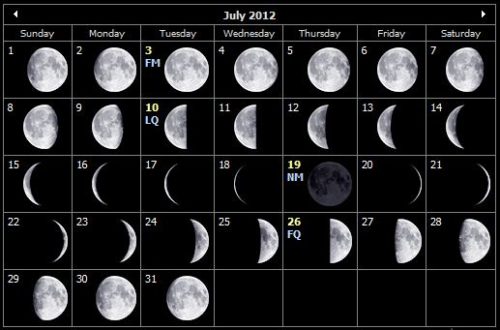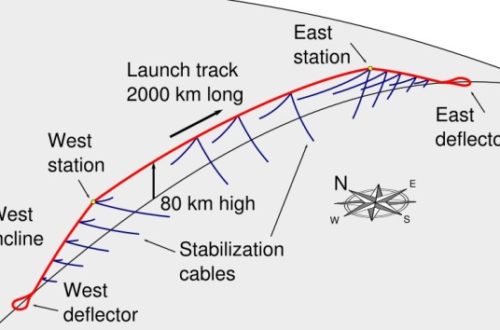How Can We Best Observe the Sun’s Chromosphere and Corona?

Did you know that the sun’s corona reaches temperatures of more than a million degrees? Viewing the chromosphere and corona of the sun opens a window into solar dynamics. Whether it’s ground-based telescopes or missions into space, we’ve got the tools for this. Techniques such as spectrography and coronagraphy provide views of additional layers of the sun.
However, brightness and the Earth’s atmosphere can hinder observations. Weather conditions and equipment limitations add to the complexity. It’s worth knowing these solar layers, as they play a crucial role in understanding solar behavior.
Get into studies of solar phenomena and learn what makes a sun go. The trip is illuminating, in every sense.
Importance of Solar Layer Observation
Why Observe the Chromosphere?
The chromosphere is a layer of the sun’s atmosphere, and it’s crucial to understanding solar dynamics. Solar flares originate in this region. These powerful eruptions can launch solar material and energy straight toward Earth!
These flares can disrupt our satellites and, when they’re strong, can even interfere with radio communications. Imagine trying to call someone, and suddenly the line goes fuzzy due to a solar flare! By studying the chromosphere, we can better understand these events and maybe even predict them.
This layer is also key to understanding the sunspot cycle, which affects weather patterns here on Earth. During this cycle, the sun brightens and dims, which directly affects plant photosynthesis. This link underscores just how dependent we are on the sun.
Why Observe the Corona?
Now, what about the corona, the sun’s outermost layer? It’s confusing why it’s hotter than the photosphere by so much. This is particularly weird given that it’s farther from the sun’s core. We’re talking about temperatures up to 300 times hotter! Scientists are still working out why that is.
During a total solar eclipse, the thrill of seeing the corona is taken to the next level. This rare event allows the moon to block the sun’s bright light, revealing the dazzling, wispy layer of the sun’s atmosphere.
Another interesting aspect is nanoflares. These are little flares that occur millions of times a second over the face of the sun and add to the corona’s heat. There are also coronal mass ejections which can disrupt radio signals and damage sensitive electronics if they hit Earth.
Impact on Solar Studies
Understanding these solar layers isn’t purely a matter of curiosity. There are real-world implications of this. Solar studies teach us how the sun makes energy through fusion in its core.
Tracking solar activity helps us get ready for solar flares and coronal mass ejections. This vigilance keeps the impact of their effects on our technology in check. For example, a massive solar storm could take out power grids or disrupt GPS.

Methods to Observe Solar Layers
Ground-Based Observatories
When viewing the Sun’s chromosphere and corona from the ground, specialized filters make solar telescopes a must. These tools improve our capability to observe these intriguing layers of the Sun. Most of these telescopes use an H-alpha filter, which is excellent for looking into the chromosphere.
These filters range from 1 angstrom to an unbelievably small 0.2 angstrom. They let us capture amazing details of a solar feature like a prominence or filament.
Images taken in H-alpha and calcium-K stand out in stark contrast to those taken in white light. You’ll easily see the differences in how they present themselves. Each filter shows the Sun in a different way. The calcium atoms are particularly important, running at 393.3 nm for Calcium-K and 396.8 nm for Calcium-H filters.
Space-Based Missions
Space-based missions offer another layer to the Sun’s outer atmospheres. Missions such as NASA’s Solar Dynamics Observatory (SDO) have the advantage of avoiding atmospheric disturbances that ground-based telescopes encounter. This means clearer, uninterrupted views of the solar corona and chromosphere.
SDO uses a brilliant combination of instruments to take stunning pictures in a range of wavelengths. This reveals the Sun’s dynamic processes in real time. Space missions are crucial for studying these super massive sunspots that can measure over 200,000 km.
Scientists can learn more about solar phenomena by observing these areas from space. This method filters out the distortion from Earth’s atmosphere. These missions also enable us to anticipate space weather events, which can greatly affect our technology-saturated society.
Notable Solar Observation Missions
Ongoing NASA Missions
In the observation of the chromosphere and corona of the Sun, NASA is a front-runner. One of the key missions is the Parker Solar Probe. Launched in 2018, it’s the closest we’ve ever gotten to the Sun.
This mission gives us the opportunity to investigate why the outer layer is so hot. Surprisingly, it beats the Sun’s surface temperature of around 5,500 degrees Celsius.
Another is the Solar Dynamics Observatory (SDO), which is currently operating. It watches the Sun 24/7, providing high-resolution images that allow us to get a glimpse of the Sun’s churning surface.
Collaborative International Missions
International collaboration is the name of the game when probing the Sun. A prime example is the ESA/NASA Solar Orbiter. This mission aims to study the Sun from a distance. This lets us see the Sun’s polar regions, which are otherwise obscured.
Understanding these areas can give us clues about the Sun’s magnetic field and its cycles. Another noted mission is Japan’s Hinode, which collaborates with American and European partners. This mission is all about the Sun’s magnetic fields and how those fields can drive solar eruptions.
Future Exploration Plans
Looking toward the future, things do look bright for solar observation. NASA is preparing for the awesome PUNCH mission. This mission includes a quartet of satellites that will map the Sun’s corona and solar wind.
This mission aims to clear up how the solar wind interacts with our planet. The solar wind is a stream of charged particles that impacts Earth’s environment. It’s akin to observing the way wind sculpts sand dunes, only on an astronomical scale.
The European Space Agency (ESA) plans to launch the Proba-3 mission, which will use two spacecraft flying in formation to study the Sun’s faint corona.
Challenges in Observing Solar Layers
Atmospheric Interference Issues
When we look at the Sun, we think we see it clearly. However, the Earth’s atmosphere scatters sunlight, creating a phenomenon that disrupts images and makes them shimmer. This effect makes it difficult to get an accurate view of the Sun’s chromosphere and corona. It’s akin to trying to look out a foggy window.
Sunspots become scarce during solar minimum years. The atmospheric conditions at that time can mask their visibility, creating the appearance that there are no spots at all, though weak ones may be present. Considering that sunspots last only about two weeks, having poor atmospheric conditions at the time of the observation can be quite frustrating.
Technological Limitations
Then there’s the tech side of things. Even with powerful telescopes, capturing the Sun’s corona remains a challenge. The corona is blisteringly hot, reaching close to 1,000,000 Kelvin. This extreme energy level requires sophisticated instruments to detect the faint emissions.
Most solar telescopes use coronagraphs to cover up the Sun’s bright disk. This devious trick allows us to see the corona more clearly. If you only use a solar filter and a regular camera, you’ll just get small and fuzzy images of the Sun’s disk. Even using zoom lenses with 200 mm to 300 mm of focal length still results in inadequate images. You need some serious gear to get a good shot.
The Sun rotates once every 25 days at its equator. Because it takes even longer at the poles, recording a full rotation requires many observations over time.
Data Interpretation Difficulties
Lastly, reading the data we gather presents another significant challenge. The density of the photosphere is less than 1% that of Earth’s atmosphere. This low density complicates the measurement and comprehension of the data we collect.
The Sun’s appearance changes with sunspot cycles—where sunspots make it look darker, and bright faculae make it brighter. During a sunspot maximum, the Sun can appear about 0.1% brighter than it does at minimum.
Figuring out what these slight shifts in the data mean concerning solar activity requires a lot of expertise. We’re dealing with big data here, and the challenge lies in identifying meaningful patterns in the vast amount of information.
Conclusion
You’re curious about how to observe the sun’s chromosphere and corona? Seeing these solar layers isn’t just about getting a glimpse of our closest star. With the right equipment, including specialized telescopes and solar missions, you can view beautiful solar flares. The instruments let you learn more about space weather. Think about the Parker Solar Probe and how close it’s getting to the sun, giving us data never before seen.
Seeing these layers isn’t without challenges — we have the glare of the sun and our atmosphere to consider. The payoff? It’s enormous. We get insights to predict solar storms and protect our tech here on Earth.
Frequently Asked Questions
What is the importance of observing the Sun’s chromosphere and corona?
By observing these solar layers, we can better understand solar activity. It helps forecast space weather that affects technology on Earth. This kind of research is indispensable when it comes to protecting satellites and communication systems.
What methods are used to observe the Sun’s chromosphere?
Scientists use telescopes with special filters. Instruments such as the Hydrogen-alpha filter enable close-up viewing. These filters isolate specific light wavelengths, revealing the chromosphere’s structure and dynamics.
How can we observe the Sun’s corona?
You can best see the corona during a solar eclipse. Otherwise, coronagraphs are employed. These devices block the Sun’s bright surface, letting researchers study the dim corona. Space telescopes like SOHO also deliver useful data.
What are some notable solar observation missions?
Missions such as NASA’s Parker Solar Probe and ESA’s Solar Orbiter are instrumental. They provide a wealth of detail about the solar layers. This helps us better understand the solar processes and their consequences for the solar system.
What challenges exist in observing the Sun’s layers?
The brightness and heat of the Sun are problematic. Specialized instruments and techniques are needed. Even Earth’s atmosphere can distort observations, so astronomers often turn to space-based telescopes where the data are clearer.
Why is it difficult to observe the Sun’s chromosphere?
The chromosphere is not as bright as the photosphere; it’s difficult to see. You need specialized filters and instruments to pick its light out. This complexity has made detailed study difficult.
How do solar observations benefit us on Earth?
They aid in forecasting solar storms which can disrupt technology. Understanding solar behavior helps protect satellites, power grids, and communication systems. It does improve our readiness for space weather.
Would you like to receive similar articles by email?





